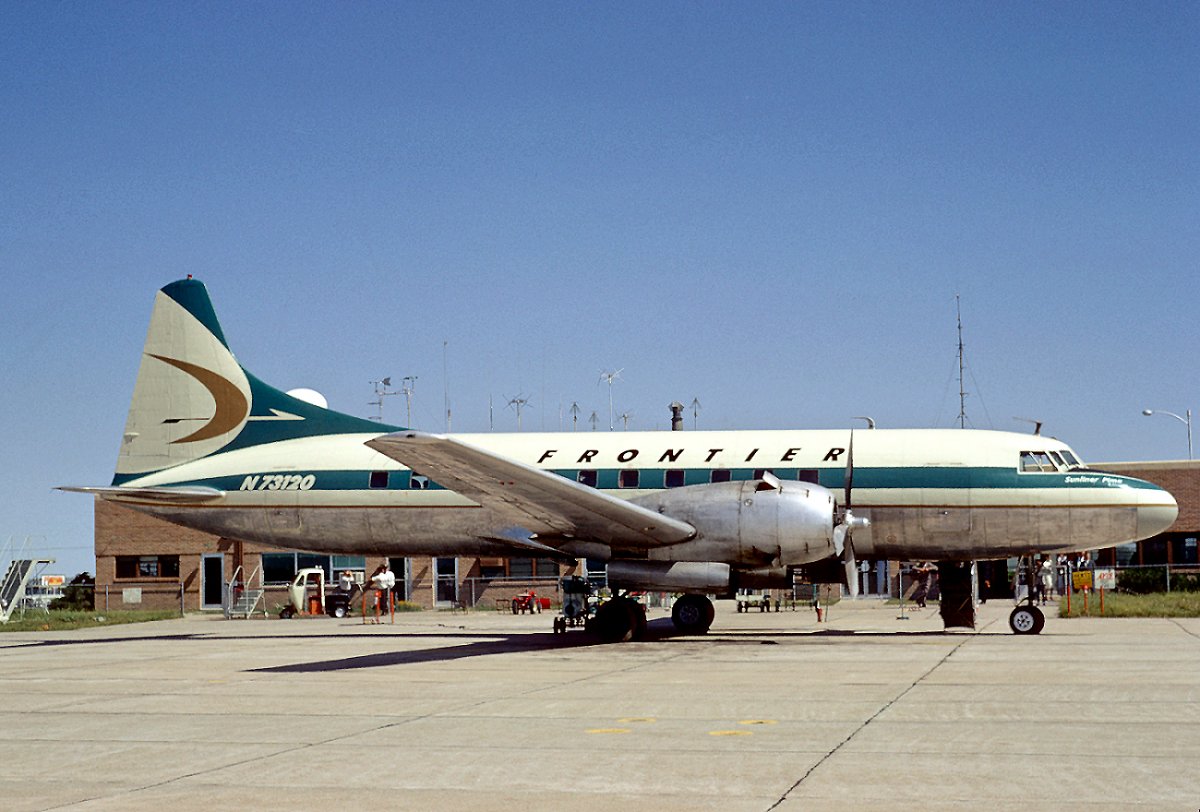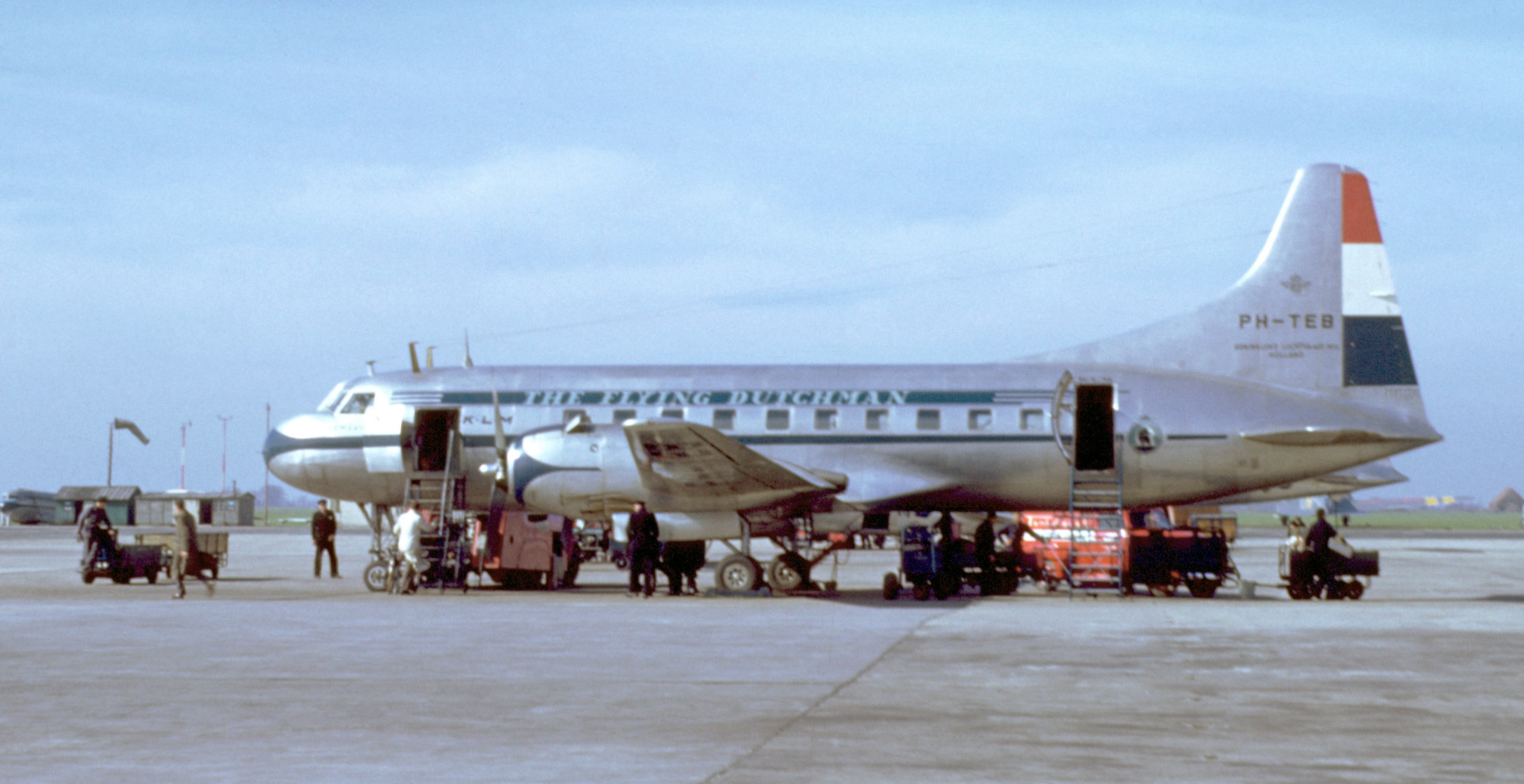
Convair 240/340/440/540/580/600/640/5800
- CountryUnited States of America
- TypeShort haul commercial transports
- Powerplants240 - Two 1490kW (2000hp) Pratt & Whitney R-2800-CA18 Double Wasp piston radial engines driving three blade constant speed propellers. 340 - Two 1790kW (2400hp) R-2800-CB16 Double Wasps. 440 - Two 1865kW (2500hp) R-2800-CB16 or -CB17 Double Wasps. 580 - Two 2800kW (3750shp) Allison 501-D13H turboprops driving four blade constant speed propellers. 640 - Two 2255kW (3025hp) Rolls Royce R.Da.10/1 Darts. 5800 - Two 3430kW (4600shp) Allison 501-D22Gs.
- Performance240 - Cruising speed 435km/h (235kt). Range with max fuel 2900km (1565nm). 340 - Cruising speed 457km/h (247kt). Typical range with max payload 935km (505nm). 440 - Max cruising speed 483km/h (261kt), economical cruising speed 465km/h (250kt). Service ceiling 24,900ft. Range with max payload 756km (408nm), range with max fuel 3106km (1677nm). 580 - Max cruising speed 550km/h (297kt) at 20,000ft. Range with 2270kg (5000lb) payload 3650km (1970nm), range with max fuel 4773km (2577nm). 640 - Cruising speed 483km/h (260kt). Range with max payload 1979km (1069nm), range with max fuel 3138km (1695nm).
- Weights240 - Empty 12,520kg (27,600lb), max takeoff 18,956kg (41,790lb). 340 - Empty 13,375kg (29,486lb), max takeoff 21,320kg (47,000lb). 440 - Empty 15,110kg (33,314lb), max takeoff 22,544kg (49,700lb). 580 - Operating empty 13,732kg (30,275lb), max takeoff 26,371kg (58,140lb). 640 - Operating empty 13,733kg (30,275lb), max takeoff 25,855kg (57,000lb). 5800 - Operating empty 15,043kg (33,166lb), max takeoff 28,576kg (63,000lb).
- Dimentions240 - Wing span 27.97m (91ft 9in), length 22.76m (74ft 8in), height 8.20m (26ft 11in). Wing area 75.9m2 (817sq ft). 340 - Wing span 32.12m (105ft 4in), length 24.13m (79ft 2in), height 8.58m (28ft 2in). Wing area 85.5m2 (920sq ft). 440 - Same as CV-340 except for length 24.84m (81ft 6in). 580 - Wing span 32.12m (105ft 4in), length 24.84m (81ft 6in), height 8.89m (29ft 2in). Wing area 85.5m2 (920sq ft). 5800 - Same except for length 29.18m (95ft 9in).
- Capacity240 - Flightcrew of two or three. Passenger seating for up to 40, or a 4240kg (9350lb) payload. 340 - Flightcrew of two or three. Passenger seating for up to 52, or a 6075kg (13,391lb) payload. 440 - Flightcrew of two or three. Passenger seating for up to 52, or a 5820kg (12,836lb) payload. 580 - Flightcrew of two or three. Passenger seating for up to 56 at four abreast and 76cm (30in) pitch.
- Production1076 built in total, of which 566 240s (incl 364 T-29s and 26 C-131s), 311 340s (incl 65 C-131s) and 199 440s (incl 21 C-131s). Additionally 10 turboprop 540s were built by Canadair. 170 340s and 440s converted to 580s, 38 240s converted to 600s, 27 340s and 440s converted to 640s. 80 converted Convairs remained in commercial service in late 1998. In addition there have been four 5800 conversions, with a fifth currently under construction.
The Convair 240, 340 and 440 was one of the closest plans to draw close to being a Douglas DC-3 substitution as in spite of an excess of modest DC-3s in the post bellum years this group of aerial shuttles attained extensive deals achievement.
Outline of the first 110 was launched in light of an American Airlines demand for a DC-3 substitution. American discovered the 110 (which first flew on July 8 1946) to be excessively little and asked that the 110 be scaled up in size, and this brought about the 240 Convairliner. The 240 was apparently the most progressive short pull aerial shuttle of its day, and first flew on March 16 1947 and entered administration on June 1 1948.
The achievement of the 240 prompted the 1.37m (4ft 6in) extended 340, which first flew on October 5 1951, and the enhanced 440 Metropolitan which joined additional lodge sound-sealing, new rectangular fumes outlets, tighter motor cowlings, and some other air movement optimized enhancements and first flew on October 6 1955. The greater part of the 440s were likewise conveyed with climate radar in an extended nose, which had been an alternative on the 340.
The 240, 340 and 440 sold in substantial numbers, essentially to aerial shuttles in North America, and framed the spine of numerous carriers' short to medium pull armadas. Today the little number of cylinder Convairs that stay in administration are essentially utilized as tankers.
A large portion of the Convairs were likewise constructed for the US Air Force as the C-131 and T-29 in numerous adaptations, and for the US Navy as the R4y which were redesignated as well as C-131 in 1962.
On the other hand, the first cylinder Convairs have been the subject of various turboprop alteration programs, the line's natural quality and dependability settling on it a famous decision for transformations.
As ahead of schedule as 1950 the capability of turboprop controlled 240s was perceived, prompting the first flight and advancement of the 240-21 Turboliner, while an Allison 501d fueled YC-131c military change first flew on June 19 1954. One other early transformation happened in 1954 when D Napier and Sons in Britain changed over 340s with that organization's 2280kw (3060hp) Eland N.el.1 turboprops as the 540. Six such air ship were changed over for Allegheny Airlines in the USA, in spite of the fact that these flying machine were later changed over once more to cylinder power. Canadair then fabricated 10 new flying machine with Eland motors as the CL-66 for the Royal Canadian Air Force, where they were assigned CC-109 Cosmopolitan.
The most famous Convair transformations were those done by Pacaero in California for Allison, and this included changing over 340s and 440s to 580s with Allison 501d turboprops, in addition to altered tail control surfaces and a bigger tail range. The main such change flew on January 19 1960, in spite of the fact that it was not until June 1964 that a changed over air ship entered administration.
Convair's own particular change project included Rolls Royce Darts, and the first of these flew on May 2 1965. In this manner changed over 240s turned into 600s, while 340s and 440s turned into 640s.
Super 580 Aircraft Company, a division of Flight Trails Inc., supplanted the Allison 501-D13d motors by -D22gs and fused some further enhancements on a few 580s which were redesignated Super 580.
Kelowna Flightcraft in Canada however has offered the most aspiring Convair change program, the 5800, having extended the 580 by 4.34m (14ft 3in) and returning to the 440's unique tail unit. Creation changes have another cargo entryway and advanced aeronautics with EFIS.
The greater part of the remaining Convairs are currently utilized as payload transports.




